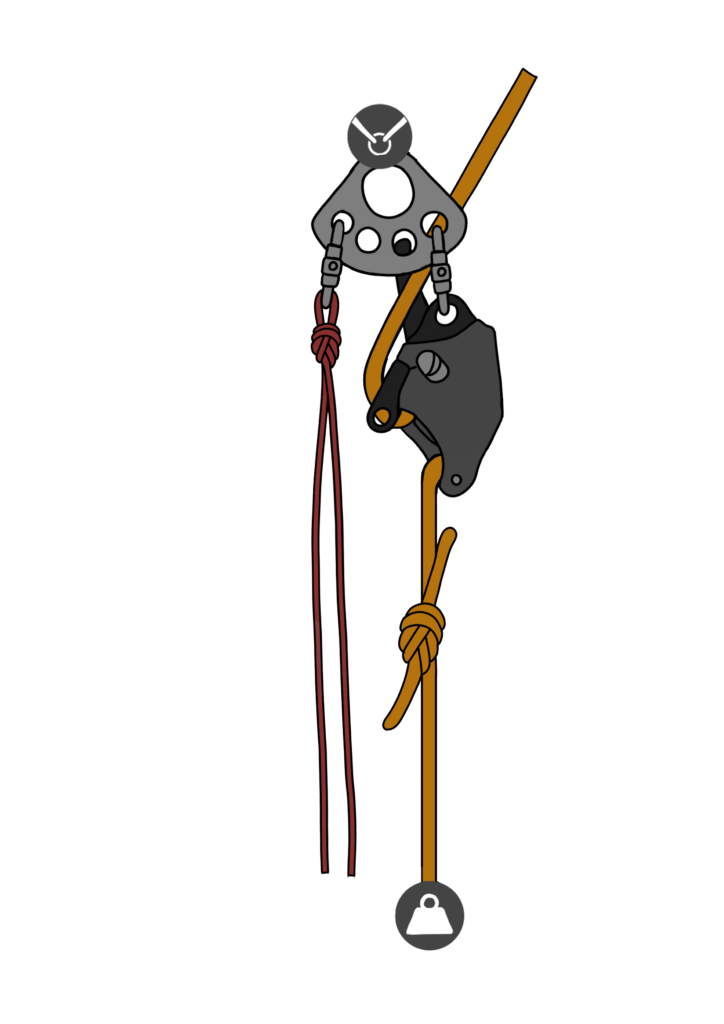Dog and Tails Knot Passing Systems
Rope rescue operations are often a test of precision, skill, and adaptability. Among the myriad techniques used by professionals, the Dog and Tails Method stands out for its ability to manage and bypass knots during critical phases of rescue. This approach provides an elegant solution for maintaining control and safety, particularly when using devices like the Clutch.
Imagine a high-stakes scenario where a rescue team must lower a load down a sheer cliff, only to encounter a knot blocking the rope’s path through the system. Stopping the operation entirely is not an option, and the risk of error is high. Enter the Dog and Tails Method—a proven technique that allows rescuers to maintain a seamless flow while adjusting the system to safely pass the obstacle.
This technique doesn’t just solve problems; it transforms challenges into manageable tasks, empowering teams to adapt on the fly without compromising safety or efficiency.
The Dog and Tails Method: Step-by-Step
Step 1: Pause and Prepare
As the knot nears the Clutch—about 0.5 meters above it—the first priority is to pause the operation. At this moment, a solution is prepared:
- Tie a figure eight on a bight with an 8mm cord, securing it to a reliable anchor.
- Using this cord, create a crisscross pattern around the rope at least ten times, each cross reinforcing the last.
- Secure the wrapping with a square knot and tighten the cord by milking it toward the load, ensuring it’s stable and ready to take the tension.
This temporary anchorage becomes the lifeline of the operation, allowing the primary system to adjust without losing control.
Step 2: Transfer the Load
Once the Dog and Tails setup is secure, the load is carefully transferred:
- Lower the rope slightly using the Clutch, allowing the tension to shift entirely to the Dog and Tails.
- With the load fully supported by the new setup, remove the rope from the Clutch and rerig it so the knot sits below the Clutch.
- During this adjustment, the Clutch handle remains in the ‘Stop’ position, ensuring complete safety.
This deliberate and precise step sets the stage for the operation to continue smoothly.
Step 3: Re-transfer the Load
With the knot safely bypassed, it’s time to return control to the primary system:
- Firmly grip the Dog and Tails cord near the load and gradually work it back toward the anchor.
- This slow, controlled motion shifts the tension from the Dog and Tails back to the Clutch, ensuring a seamless transition without sudden movements or instability.
Patience and focus are key here, as the success of the operation depends on a smooth and steady transfer.
Step 4: Resume Operations
The final step brings everything back to normalcy:
- Remove the Dog and Tails cord, ensuring the system is clear and ready for continued use.
- Rotate the Clutch handle to the ‘Stand By’ position and confirm with the team leader that operations can resume.
With the knot successfully bypassed, the team can proceed confidently, knowing they’ve handled a complex challenge with precision and care.
The Importance of the Dog and Tails Method
The Dog and Tails Method is more than a technique—it’s a mindset of adaptability and control in the face of complexity. By creating a temporary anchorage system, this approach:
- Maintains operational flow: Knots no longer have to halt progress.
- Enhances safety: Precise load control ensures stability during adjustments.
- Boosts efficiency: Teams can make mid-operation changes without reconfiguring the entire system.
In essence, this method equips rescuers with the tools to navigate unforeseen obstacles, turning potential setbacks into opportunities for excellence.
A Technique Worth Mastering
For teams engaged in technical rescues, the Dog and Tails Method is a game-changer. It exemplifies the balance of innovation and tradition, combining time-tested principles with modern equipment like the Clutch. By mastering this approach, teams not only improve their operational capabilities but also solidify their commitment to safety and adaptability.
Whether you’re a seasoned professional or new to rope rescue, this technique deserves a place in your skill set. It’s a testament to the power of preparation, precision, and teamwork in overcoming challenges, one knot at a time.
Dog and Tails and Other Knots – Hitches and other cool things
Peace on your days,
Lance













